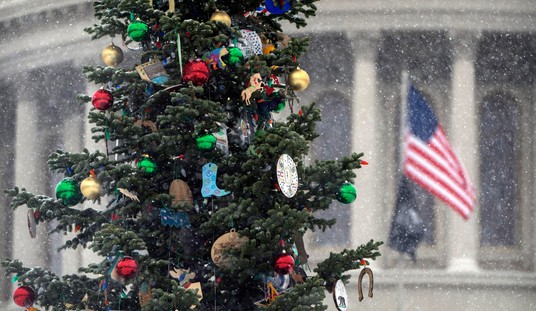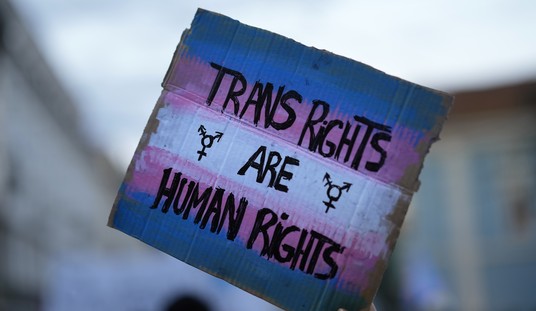The Biden administration is implementing rules by federal fiat, despite being reprimanded by the Supreme Court and Congress for exceeding its authority.
With Congressional gridlock, President Biden has relied on issuing executive orders and deputizing his Cabinet heads to craft agency rules exceeding their authority.
The West Virginia vs EPA ruling determined the Environmental Protection Agency (EPA) “violated the “major-questions” doctrine – the idea that if Congress wants to give an administrative agency the power to make “decisions of vast economic and political significance, it must say so clearly.” This seminal ruling, as it’s understood, applies beyond the EPA and is applicable to all agencies.
With this being Year Four of Biden’s first term, he is engaging in a practice known as “midnight rulemaking.” The newly published Fall 2023 Unified Agenda of Regulatory and Deregulatory Actions page gives us a glimpse into the rule “administrative agencies plan to issue in the near and long term.”
Here are several rules that are likely to be finalized this year.
Recommended
SEC Climate Disclosure Rule
After a two-year delay, the Securities and Exchange Commission rule on mandatory climate disclosures for publicly traded companies - including tracking scope 3 emissions (upstream and downstream) - and risk assessment practices is expected to be finalized in April of this year.
This rule, for instance, would exceed its bounds by giving the SEC undue powers to regulate entities that aren’t publicly-traded–namely small and medium-sized farmers and ranchers. If these entities were to not comply with disclosing their emissions, they would lose business with publicly-traded companies they partner with–causing a negative chain reaction and leading, potentially, to food insecurity and privacy invasions.
Last fall, California passed their own version of the proposed rule - called the Climate Corporate Data Accountability Act -which is even far more troubling and far-reaching than the federal rule. Effective October 14th, 2023, the law mandates companies that are incorporated in the Golden State must disclose their carbon emissions if their net profits exceed $1 billion. This new law will mandate companies track the carbon footprint of their supply chain, business travel, worker commute, and even customer product behavior.
BLM Conservation Landscape & Health Rule
The Bureau of Land Management’s Conservation Landscape and Health Rule is expected to be finalized early this year.
The Biden administration claims it’ll put conservation on equal footing with multiple-use management of public lands as authorized by the Federal Land Policy and Management Act of 1976. But there are several problems that arise from this rule.
First, conservation - mind you - is already considered a “use” on federal lands under FLPMA. Second, the “conservation lease” proposal would allow clean energy companies to virtue signal on climate issues and, ironically, destroy high-value, productive habitat by promising to “conserve” nearby lower-valued habitat. Section 6102.4(a)(3) of the proposed rule says the following about “conservation leases”:
Section 6102.4(a)(3) would specify that conservation leases may be issued either for “restoration or land enhancement” or “mitigation.” The proposed rule would only authorize issuance of conservation leases for ecosystem protection where that protection is related to a restoration or land enhancement project or to support mitigation for a particular action. For example, as part of authorizing a renewable energy project on public lands, the BLM and the project proponent may agree to compensate for loss of wildlife habitat by restoring or enhancing other habitat areas. A conservation lease could be used to protect those areas. Similarly, the BLM may require compensatory mitigation for residual impacts that cannot be avoided. A conservation lease could be used to put compensatory mitigation dollars to work restoring compromised landscapes.
Third, the rule is likely illegal. A similar version called the BLM 2.0 Planning Rule was considered and undone via the Congressional Review Act in 2017. President Trump repealedthe rule shortly afterward.
Even supporters of the Public Lands Rule, like Senator Michael Bennet (D-CO), have expressed concerns livestock grazers would lose access under the current version of the proposed rule.
Independent Contractor Rule
The Biden Department of Labor’s obtuse independent contractor rule - aimed at restricting flexible work arrangements - is set to also be finalized this year.
According to one report published last week, the Office of Information and Regulatory Affairs (OIRA) “completed its review of the U.S. Department of Labor’s final rule on independent contractor classification under the Fair Labor Standards Act.” It would then return to DOL to be published in the Federal Register and take effect within 60 days of publishing.
As I noted at Townhall in June 2022, the DOL IC rule would take an “ax to the Fair Labor Standards Act (FLSA) to make all workers employees, this administration is violating norms and dismissing economic trends favoring flexible work arrangements.”
Since the terrible California Assembly Bill 5 has been implemented and its federal companion, the Protecting the Right to Organize (PRO) Act, has stalled in Congress, this is the administration’s best route to assuage its Big Labor backers.
The union workforce can’t be resuscitated, regardless of how well-coordinated organizing efforts and public relations support are. 2023 numbers are expected to be released in the coming weeks and are likely to spell bad news for union supporters–with only 10.3% of the workforce engaging in union jobs per 2022 numbers. American workers, naturally, are trading traditional 9-to-5 jobs for more flexible and even remote work arrangements.
Conclusion
From conservation to economic matters, no issue is safe. And worst of all, every American will feel the impact of these actions and be less free as a result.
Let’s hope there will be checks and balances.

























